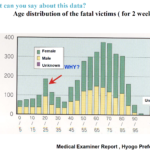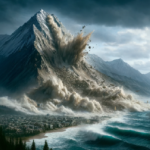Disasters are indeed categorized based on their origin and the factors that contribute to their occurrence. This categorization into natural, technological, and human-made disasters is critical for understanding the varying dynamics of disaster risk, management, and mitigation strategies. Here’s a brief overview of each category, along with references that provide in-depth insights:
1. Natural disasters: These include earthquakes, hurricanes, floods, wildfires, and volcanic eruptions as examples of natural processes and phenomena. Even though human activity can exacerbate their effects, natural disasters are frequently beyond human control.
Reference: Cutter, S. L. (2005). The Geography of Social Vulnerability: Race, Class, and Catastrophe. Social Science Quarterly, 84(2), 242-261. This work explores the social dimensions of vulnerability to natural disasters, highlighting the intersection of social factors with natural phenomena.
2. Technological Disasters: Also known as anthropogenic or man-made disasters, these occur as a result of technological or industrial accidents, infrastructure failures, or specific human activities that lead to catastrophic events. Examples include chemical spills, nuclear accidents, and industrial explosions.
Reference: Perrow, C. (1984). Normal Accidents: Living with High-Risk Technologies. Princeton University Press. Perrow analyzes the inherent risks of complex technological systems and the inevitability of failures that lead to disasters.
3. Human-Made Disasters: This category includes events that are a direct result of human actions but are not necessarily related to technological failures. These can include acts of terrorism, armed conflicts, and widespread violence. Human-made disasters are characterized by their intentional nature and the purposeful infliction of harm on communities or the environment.
Reference: Wisner, B., Blaikie, P., Cannon, T., & Davis, I. (2004). *At Risk: Natural Hazards, People’s Vulnerability, and Disasters*. Routledge. Although primarily focused on natural hazards, this book provides a comprehensive framework for understanding vulnerability and resilience in the context of various disaster types, including human-made events.
Each of these categories underscores the need for tailored approaches to disaster risk reduction, preparedness, response, and recovery. Understanding the specific characteristics, causes, and impacts of each type of disaster is crucial for developing effective management and mitigation strategies.





